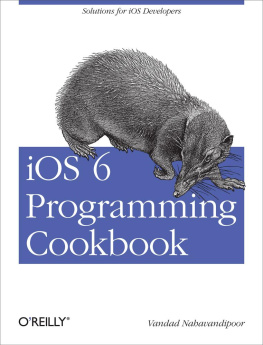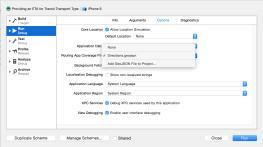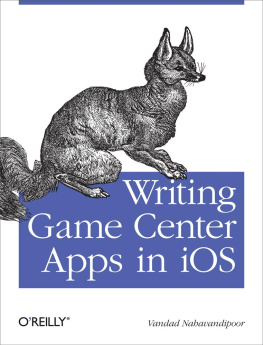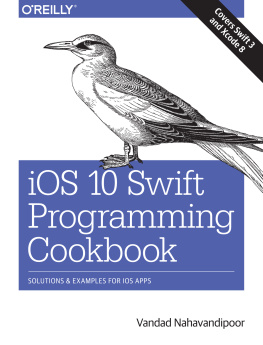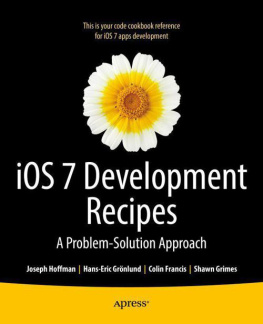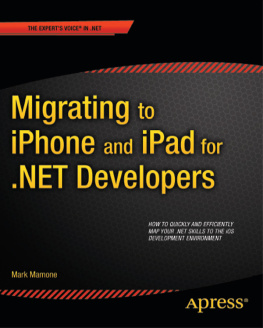I assume you are comfortable with the iOS development environment and know how to create an app for the iPhone or iPad. This book does not get novice programmers started, but presents useful ways to get things done for iOS programmers ranging from novices to experts.
Organization of This Book
In this book, we will discuss frameworks and classes that are available in iOS 6 SDK. This book does its best to teach you the latest and the greatest APIs. As you know, some users of your apps may still be on older versions of iOS, so please consider those users and choose your APIs wisely, depending on the minimum iOS version that you want to target with your apps.
Here is a concise breakdown of the material each chapter covers:
Explains how Objective-C classes are structured and how objects can be instantiated. The chapter talks about properties and delegates as well as memory management in Objective-C. Even if you are competent in Objective-C, I strongly suggest that you read this chapter, even if you only skim through it, to understand the basic material that is used in the rest of the book.
Describes various approaches to constructing your iOS applications user interface by taking advantage of different tools the SDK provides. This chapter also introduces you to features that are only available on the iPad, such as the popover and split view controllers.
Explains how you can take advantage of Auto Layout in the iOS SDK in order to construct your UI in such a way that it can be resized and stretched to pretty much any screen dimension.
Shows how you can work with table views to create professional-looking iOS applications . Table views are very dynamic in nature, and as a result, programmers sometimes have difficulty understanding how they should work with them. By reading this chapter and trying out the example code, you will gain the knowledge that is required to comfortably work with table views.
Demonstrates the process of storyboarding , the new way to define the connections between different screens in your app. The great thing about storyboarding is that you dont have to know anything about iOS programming to get a simple app running. This helps product analysts, product owners, or designers who work independently of developers to gain knowledge of the UI components iOS offers and to build more robust products. Programmers can also take advantage of storyboarding to easily create prototypes. Storyboarding is just fun, whether you do it on paper or using Xcode.
As humans, we can do many things simultaneously without thinking much about it. With advances in computer technology, mobile devices are also able to multitask, and provide programmers with tools and mechanisms that can accomplish more than one task at the same time. This is called concurrency . In this chapter, you will learn about Grand Central Dispatch, Apples preferred way of achieving concurrency in iOS. You will also learn about timers, threads, and operations.
Describes how you should use Map Kit and Core Location APIs to develop location- aware iOS applications. First you will learn about maps, and then you will learn how to detect a devices location and tailor your maps with custom annotations. You will also learn about geocoding and reverse geocoding, as well as some of the methods of the Core Location framework, which are only available in the iOS 4 SDK and later.
Demonstrates how to use gesture recognizers, which enable your users to easily and intuitively manipulate the graphical interface of your iOS applications. In this chapter, you will learn how to use all available gesture recognizers in the iOS SDK, with working examples tested on iOS 5 on different devices such as the iPhone 3GS, iPhone 4, and iPad.
Demonstrates how to download data from a URL and parse XML files. You will learn about synchronous and asynchronous connections and their pros and cons. You will also learn about caching files in memory and on disk to avoid consuming the possibly limited bandwidth of an iOS device on which your application could be running.
Discusses the AV Foundation and Media Player frameworks that are available on the iOS SDK. You will learn how to play audio and video files and how to handle interruptions, such as a phone call, while the audio or video is being played in iOS 6. This chapter also explains how to record audio using an iOS devices built-in microphone(s). At the end of the chapter, you will learn how to access the iPod Library and play its media content, all from inside your application.
Explains the Address Book framework and how to retrieve contacts, groups, and their information from the Address Book database on an iOS device. The Address Book framework is composed entirely of C APIs. Because of this, many Objective-C developers find it difficult to use this framework, as compared to frameworks that provide an Objective-C interface. After reading this chapter and trying the examples for yourself, you will feel much more confident using the Address Book framework .
One of the most important tasks that, as developers, we want to perform in our iOS apps is manipulating files and folders. Whether this means creating, reading from, writing to, or deleting them, this chapter contains enough material to get you up and running with file and folder management in iOS SDK.

